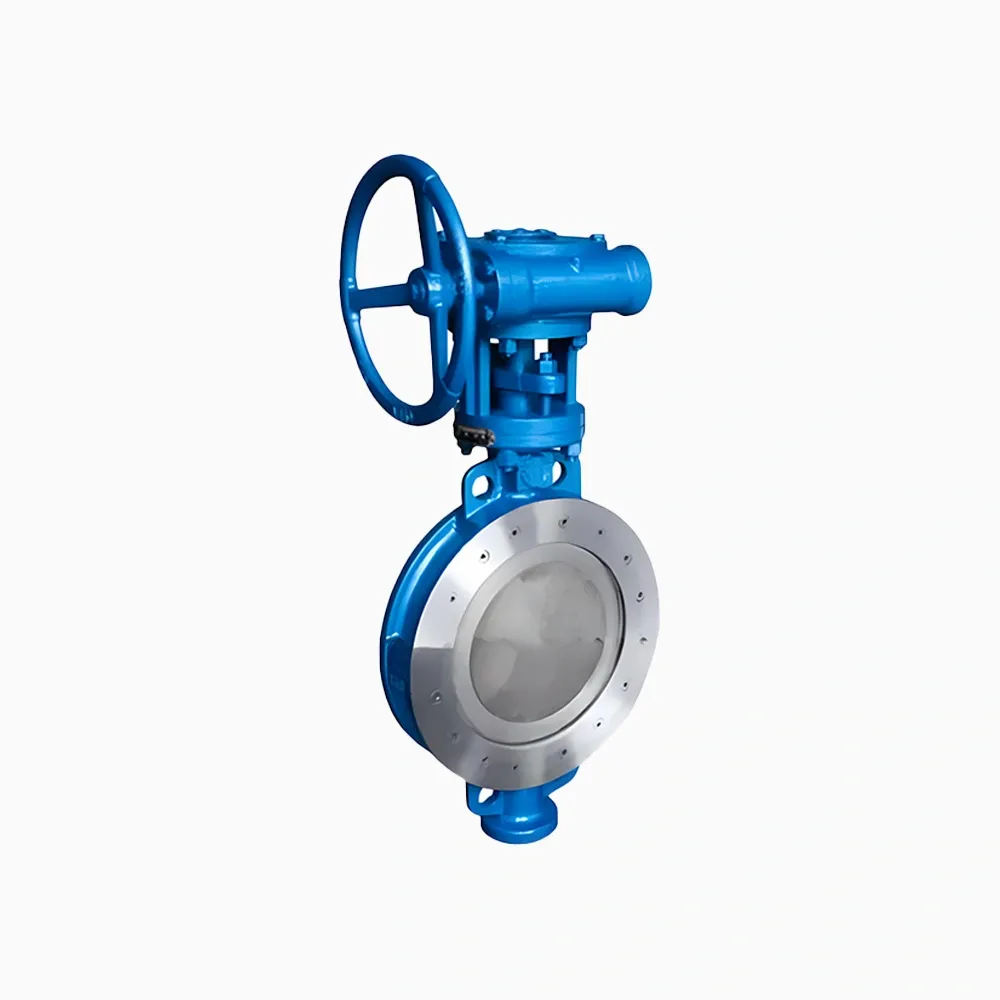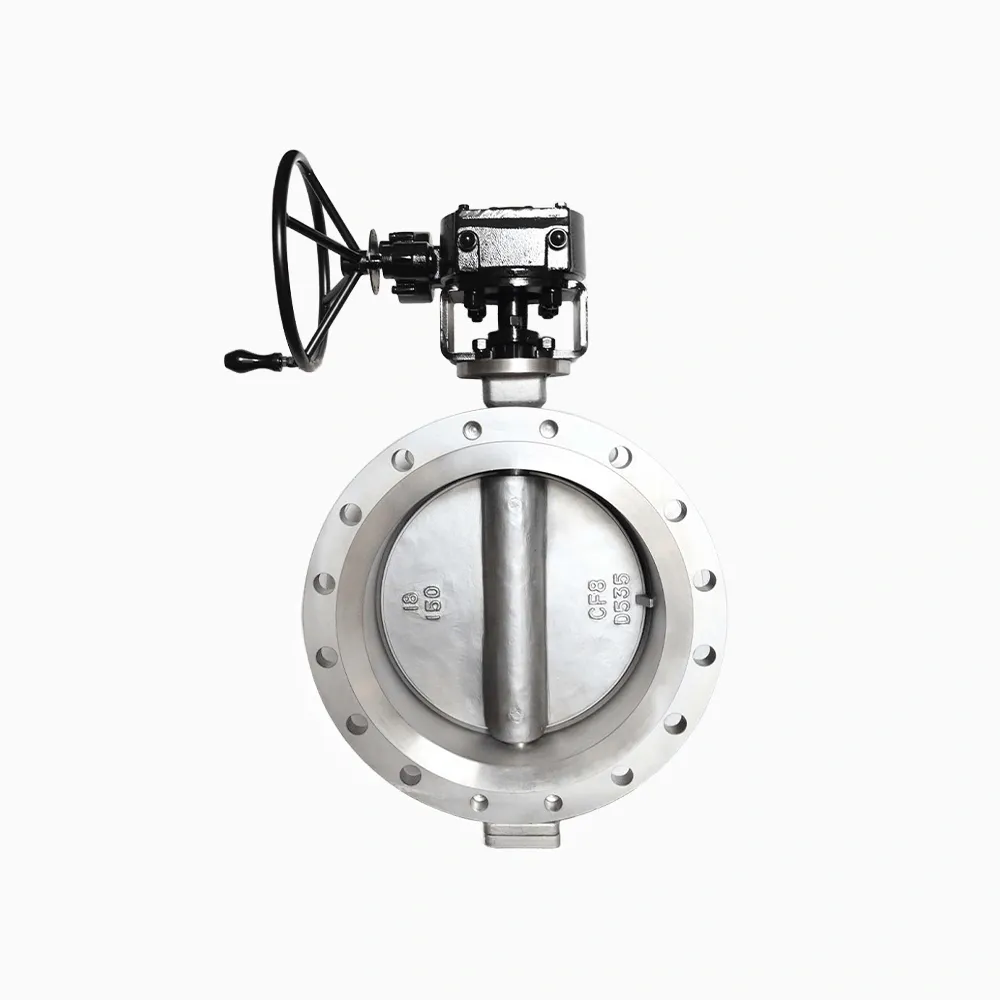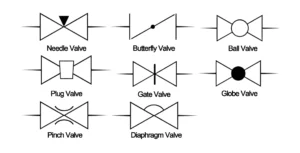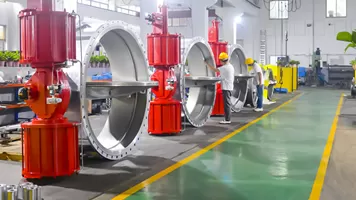
Choosing the right valve means understanding how they differ. Butterfly valves, produced by a reputable butterfly valve manufacturer, are excellent for controlling flow and operate quickly. They are particularly suited for large pipelines and cooling water systems. While gate valves provide better sealing and durability under high pressure, they are slower and not ideal for frequent adjustments. Consider the specific job requirements, available space, and maintenance needs before making a choice. Consulting with a butterfly valve manufacturer can provide valuable insights to help you decide.
Key Takeaways
- Butterfly valves are small and light, great for tight spaces.
- They are also good for quick and easy flow control.
- Gate valves seal well and last long under high pressure.
- However, gate valves are slower and not for frequent changes.
- Think about your needs: butterfly valves work well in HVAC systems.
- They are also useful in cleaning and water treatment systems.
- Gate valves are better for oil and gas pipelines.
- Cost is important; butterfly valves are cheaper for bigger sizes.
- Gate valves cost more at first but last a long time.
- Talk to a valve maker to get advice for your system.
- This will help you pick the right valve for your needs.
Understanding Butterfly Valves and Gate Valves

Butterfly Valve Basics
Definition and design features
A butterfly valve controls fluid flow using a spinning disc. Its small size and light weight make it great for tight spaces. The valve has three main parts: a round disc, a stem, and a seal. The disc spins inside the pipe to manage flow. The stem links the disc to the handle or actuator. This simple design allows fast use and easy upkeep.
How butterfly valves work
To use a butterfly valve, turn the disc up to 90 degrees. When the disc lines up with the pipe, fluid flows easily. Turning the disc across the pipe stops the flow. The valve works best in certain positions. For example, turning it halfway (30-60 degrees) gives better control and uses less force. But at very small or large angles, performance can change due to pressure and force differences.
Common uses of butterfly valves
Butterfly valves are used in many industries like water treatment and chemical plants. They work well in big pipelines and cooling systems. These valves are good for controlling flow precisely. Special types can handle very hot or cold conditions, making them reliable in tough situations.
| Performance Metric | Description | CFD Prediction Accuracy |
|---|---|---|
| Pressure Drop | The pressure difference when fluid moves through the valve. | Changes with valve angle |
| Hydrodynamic Torque | The force needed to turn the valve during fluid flow. | Best at mid-open positions |
| Flow Coefficient | How well the valve lets fluid pass through. | Accurate at mid-open positions |
| Loss Coefficient | Energy lost because of the valve in the system. | Mixed results at higher angles |
| Torque Coefficient | The ratio of force to flow rate, showing efficiency. | Less accurate at lower angles |
Gate Valve Basics
Definition and design features
A gate valve is a straight-moving valve that starts or stops flow. It has a flat or wedge-shaped gate that moves up or down. This strong design works well under high pressure. Unlike butterfly valves, gate valves are bigger and need more room to install.
How gate valves work
You use a gate valve by lifting or lowering the gate with a threaded stem. When the gate is fully raised, fluid flows freely. Lowering the gate completely stops the flow. These valves are not good for partial openings because it can cause turbulence and damage.
Common uses of gate valves
Gate valves are best for systems needing full open or close functions. They are used in water supply, oil pipelines, and factories. Their strength under high pressure makes them perfect for tough jobs where durability matters.
Tip: Pick gate valves if you need strong sealing and long-lasting use, not quick adjustments.
Gate Valve vs Butterfly Valve: Key Differences

Design and Structure
Compact and lightweight design of butterfly valves
Butterfly valves are small and light, making them easy to install. They use a spinning disc to control flow, which saves space. Their simple design lowers costs and makes handling easier. Industries like HVAC and water treatment often pick butterfly valves because they fit in tight spaces and are simple to use.
Bulkier and robust design of gate valves
Gate valves are bigger and heavier, but they are very strong. They use a solid gate that moves up and down to control flow. This design works well under high pressure and lasts a long time. However, their size makes them harder to install in small areas. Gate valves are best for jobs needing strength, like oil pipelines or power plants.
| Feature | Gate Valve | Butterfly Valve |
|---|---|---|
| Structural Design | Uses a gate or wedge for flow control | Uses a rotating disc for flow regulation |
| Working Mechanism | Operated by raising or lowering a gate | Operated by a 90° rotation of the disc |
| Flow Control | Can only be fully open or fully closed | Can regulate flow and is quicker to operate |
| Applications | Best for strict sealing, not for frequent use | Suitable for regulating and isolating flows |
| Pressure Handling | Can withstand higher pressures | Generally lower pressure tolerance |
Functionality and Mechanism
Rotating disc mechanism in butterfly valves
Butterfly valves work by turning a disc up to 90 degrees. This lets you open or close them quickly. You can partly open the disc to control flow, which helps with precise adjustments. The simple design also lasts longer because it doesn’t wear out easily.
Rising or non-rising stem mechanism in gate valves
Gate valves use a stem to move a gate up or down. This opens or closes the valve completely. They seal well when shut but don’t work for flow control. Partly opening a gate valve can cause damage over time. Gate valves are best for systems needing full open or closed states.
| Feature | Gate Valve | Butterfly Valve |
|---|---|---|
| Sealing Performance | Good sealing, used for strict sealing applications | Not primarily designed for sealing |
| Operation States | Fully open or fully closed only | Can be partially opened for flow control |
| Flow Regulation | Not suitable for throttling | Excellent for flow control and throttling |
| Pressure Resistance | Can withstand higher pressures | Lower pressure resistance compared to gate valves |
| Speed of Operation | Slow opening and closing | Quick opening and closing |
Applications and Performance
Throttling and flow control with butterfly valves
Butterfly valves are great for controlling flow. You can partly close the disc to adjust fluid movement. This makes them useful in water treatment, HVAC, and fire safety systems. Studies show they work best when partly open, helping regulate flow without big pressure drops.
Full open/close functionality of gate valves
Gate valves are made for fully open or closed use. When open, they let fluid flow freely with little resistance. They are used in water systems, oil pipelines, and chemical plants. Gate valves handle high pressure well and seal tightly, making them reliable for tough jobs.
| Valve Type | Applications | Performance Characteristics |
|---|---|---|
| Gate Valves | Water Supply Systems | Suitable for strict sealing and minimal flow resistance. |
| Oil and Gas Industry | Ideal for high-pressure environments requiring tight seals. | |
| Chemical Processing | Reliable for managing corrosive and hazardous fluids. | |
| Power Generation | Enhances operational safety in steam and cooling systems. | |
| Butterfly Valves | Water and Wastewater Treatment | Excels in quick operation and flow regulation. |
| HVAC Systems | Effectively regulates airflow in ductwork. | |
| Food and Beverage Industry | Compliant with sanitary standards for liquid flow control. | |
| Fire Protection Systems | Allows for immediate response in emergency shut-off situations. |
Tip: Think about your needs before choosing a valve. Butterfly valves are better for flow control, while gate valves work well in high-pressure systems.
Installation and Maintenance
Easy to install butterfly valves
Butterfly valves are small and light, making installation simple. Their size fits tight spaces without needing extra support. This is helpful in places like water treatment and HVAC systems.
- These valves work well in big pipelines because they are light.
- They don’t need extra room for vertical movement, saving space.
- Their basic design makes them cheaper, especially for larger sizes.
For example, a U.S. power plant upgraded to butterfly valves. The new valves fit easily without big changes. This improved cooling and cut costs and time for installation.
Maintenance needs for gate valves
Gate valves are strong but need more care due to their design. The gate’s up-and-down motion and threaded stem can wear out. High-pressure systems make this worse, so regular checks are needed.
- Gate valves have more parts, so they wear out faster.
- Their bigger size makes fixing them harder and slower.
- Sometimes, you must take the valve apart to fix problems.
Butterfly valves need less care. For instance, Eurand America switched to butterfly valves. These valves were easy to clean and didn’t need tools. This saved time and effort, showing how practical butterfly valves are.
Tip: Choose butterfly valves for easy setup and low maintenance. Gate valves are better for high-pressure jobs needing durability.
Advantages and Disadvantages of Butterfly Valves and Gate Valves
Butterfly Valves
Key advantages of butterfly valves
Butterfly valves have many benefits, making them widely used.
- Compact and lightweight design: These valves fit in small spaces and are easy to install.
- Cost-effective for large sizes: They are cheaper than gate valves for big pipelines.
- Quick operation: The disc turns 90 degrees for fast opening and closing.
- Throttling capabilities: They control fluid flow well, useful in water and HVAC systems.
- Versatility: They work under different temperatures and pressures for many uses.
| Key Performance Figures | Advantages |
|---|---|
| Fast Operation | Quick shut-offs |
| Compact and Lightweight | Space-saving |
| Cost-Effective in Larger Sizes | Budget-friendly |
| Good for Throttling | Precise flow control |
Note: Butterfly valves are perfect if you need a light, affordable, and flexible flow control option.
Potential drawbacks of butterfly valves
Butterfly valves also have some downsides to consider.
- Obstruction in flow: The disc stays in the flow path, causing small pressure drops.
- Turbulence issues: The disc’s movement can be affected by turbulence, lowering efficiency.
- Not ideal for thick liquids: Thick fluids or solids can block the disc, reducing performance.
- Risk of pressure surges: Quick operation may cause water hammer in some systems.
| Key Performance Figures | Disadvantages |
|---|---|
| Risk of Pressure Surges | Potential water hammer issues |
| Minor Pressure Drop | Reduced efficiency |
| Not Ideal for Suspended Solids or Grit | Flow obstruction |
Gate Valves
Key advantages of gate valves
Gate valves are strong and handle high pressure well.
- Unobstructed flow: Fully open, they let fluid pass with little resistance.
- Bi-directional flow: They allow smooth flow in both directions.
- High-pressure tolerance: Gate valves work well in high-pressure systems like oil pipelines.
- No residue build-up: Their design keeps pipes clean and free of blockages.
- Prevents water hammer: Slow operation reduces sudden pressure changes.
| Advantages | Description |
|---|---|
| Unobstructed Flow | Minimal pressure loss in fully open position. |
| Bi-directional Flow | Uniform flow in both directions. |
| High-Pressure Tolerance | Suitable for demanding applications like oil and gas. |
| No Residue Build-up | Keeps pipes clean and free of blockages. |
| Prevents Water Hammer | Slow operation reduces pressure surges. |
Potential drawbacks of gate valves
Gate valves have some limitations you should know about.
- Slow operation: They take longer to open due to their height.
- Limited flow control: They don’t work well for partial openings or throttling.
- Space requirements: Their size needs more room for installation.
- Higher cost: Gate valves cost more, especially in larger sizes.
| Disadvantages | Description |
|---|---|
| Slow Operation | High opening height delays operation. |
| Limited Flow Control | Not suitable for throttling or partial openings. |
| Space Requirements | Needs more room for installation and operation. |
| Higher Cost | More expensive than butterfly valves, especially in larger sizes. |
Tip: Use gate valves for high-pressure jobs needing strength, but ensure enough space for setup.
Choosing the Right Valve for Your Needs
Factors to Consider
Application type and industry requirements
The valve you pick depends on its use and industry needs. Butterfly valves are great for HVAC systems and water treatment. Their small size and quick action make them ideal. Gate valves work better for pipelines needing strong seals and high pressure. These are common in oil, gas, and chemical industries. Matching valve features to tasks is important. Linear valves help with flow control, while equal percentage valves suit heat systems.
- Fast industrial growth in Asia has raised valve demand.
- AI tools now help choose valves by studying system needs.
Space and weight constraints
How much space you have affects valve choice. Butterfly valves are small and light, fitting tight spaces easily. Their design needs less support, making setup simple. Gate valves are bigger and heavier, needing more room. This can make installing them harder in small areas.
Budget and cost considerations
Butterfly valves cost less, especially for big pipelines. Their simple design lowers maintenance costs too. Gate valves cost more but last longer and seal better. They are worth it for jobs needing no leaks.
When to Choose Butterfly Valves
Ideal scenarios for butterfly valves
Butterfly valves are best for quick use and flow control. They are used in cooling systems, HVAC, and wastewater plants. For example, a power plant saved energy by using butterfly valves. These valves handle fast flows, perfect for large pipes. Their seals stop leaks, making them reliable in tough jobs.
When to Choose Gate Valves
Ideal scenarios for gate valves
Gate valves are best for systems needing strong seals and high pressure. They work well when fully open or closed, like in water or oil pipelines. For example, gate valves are great for controlling pressure and sealing tightly. But they are not good for frequent use or flow control. Their design focuses on strength and no leaks.
Knowing how butterfly and gate valves differ helps you choose wisely. Butterfly valves have a spinning disc, making them small and great for flow control. Gate valves move in a straight line, sealing better and lasting longer under high pressure.
| Feature | Gate Valves | Butterfly Valves |
|---|---|---|
| How They Work | Moves up and down | Spins to open or close |
| Size and Weight | Bigger and heavier | Smaller and lighter |
| Cost | Costs more for larger sizes | Cheaper for bigger pipelines |
| Flow Control | Not good for adjusting flow | Great for controlling flow |
| Sealing Strength | Seals tightly | May leak in some cases |
Think about your needs, space, and budget before picking a valve. Check what works best for your job. For help, ask a reliable butterfly valve maker to guide you.
FAQ
What makes butterfly valves different from gate valves?
Butterfly valves use a spinning disc to manage flow. Gate valves use a sliding gate to open or close. Butterfly valves are small and light, fitting tight spaces well. Gate valves are bigger but seal better under high pressure. Each works best for specific tasks.
Can butterfly valves work in high-pressure systems?
Butterfly valves handle medium pressure but not very high pressure. Gate valves are better for high-pressure jobs because they are stronger and seal tightly. Always check your system’s pressure needs before picking a valve.
Which valve is simpler to install, butterfly or gate valves?
Butterfly valves are easier to set up due to their small size. They fit tight spaces and need less support. Gate valves are larger and heavier, needing more space and effort to install, especially in cramped areas.
Are butterfly valves good for controlling flow?
Yes, butterfly valves are great for controlling flow. You can partly open the disc to adjust fluid movement. Gate valves are not good for this because partial openings can cause damage and turbulence.
How do I choose between butterfly and gate valves?
Think about your system’s needs. Pick butterfly valves for quick use, flow control, and saving space. Choose gate valves for strong seals, durability, and handling high pressure. Look at your application, space, and budget to decide.







